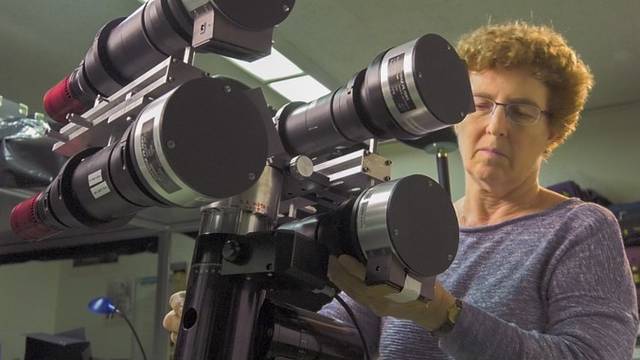HILO — While Hawaii residents will see only a partial solar eclipse Monday, University of Hawaii astronomer Shadia Rifai Habbal won’t miss out. She never does. ADVERTISING HILO — While Hawaii residents will see only a partial solar eclipse Monday,
HILO — While Hawaii residents will see only a partial solar eclipse Monday, University of Hawaii astronomer Shadia Rifai Habbal won’t miss out. She never does.
The eclipse chaser has crossed the globe since 1995 catching 14 events, all for research.
This time, she will be in Oregon, as part of an international group of scientists who will record the total eclipse as it passes over several states.
“I was interested in getting some measurements of the corona we couldn’t get any other way,” she told the Tribune-Herald, regarding how it started.
The corona surrounds the sun and is much hotter than its surface. It becomes viewable to the naked eye and easier to study during an eclipse.
“Whatever we learn about the sun, we can apply to other stars,” Habbal said in an interview taped by the university. “It tells us something about the entire universe and the formation of solar systems.”
Solar eclipses have played an important role in advancing knowledge of the universe.
During such an event in 1919, Arthur Eddington helped confirm Albert Einstein’s general theory of relativity by showing that some stars visible during the eclipse were actually behind the sun, and that its gravity was bending their light.
Back when Habbal started chasing eclipses, she said she used some early electronic cameras. But today, the group, which dubs itself the Solar Wind Sherpas because of the gear they carry, also will use spectrometers, in addition to cameras with different focal lengths.
“It gives us an idea of how the heavier elements are behaving in the corona,” she said, regarding spectrometers.
The researchers will be in Oregon, Wyoming, Alaska and Idaho, Habbal said, and will use various exposure times.
While other scientists study eclipses, she said her group, which includes other UH researchers, has the most advanced equipment.
Hawaii will see a partial eclipse at 6:35 a.m. Monday. Warnings about looking directly at the sun still apply, UH said in a press release.
If solar glasses can’t be found, UH graduate student Benjamin Boe said to poke a small hole in a piece of cardboard.
“You can put another piece of paper behind it and project an image of the sun onto a piece of paper, and that way you can see the crescent sun without actually having to look at it,” he said in a press release.
Email Tom Callis at tcallis@hawaiitribune-herald.com.
———————————————————————-
Watch a live stream of the eclipse
UH-Hilo instructor John Hamilton and lecturer Marc Roberts plan on live broadcasting the full eclipse from Idaho. That can be seen via UH-Hilo’s YouTube channel or at UH-Hilo’s Science and Technology Building starting at 6 a.m. Monday.
It also will be broadcast on Maunakea Observatories Astronomy Outreach Committee website: www.mkaoc.org.



